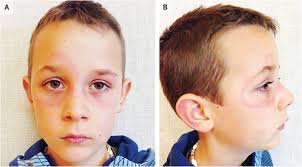Understanding Lyme Disease: Symptoms, Treatment and Prevention

Introduction to Lyme Disease
Lyme disease is an increasingly important health issue that has garnered attention over recent years due to rising incidence rates across the globe. Caused by the bacterium Borrelia burgdorferi and transmitted through tick bites, this disease poses significant health risks if left untreated. Understanding its characteristics, symptoms, and methods of prevention is crucial for public health, especially as climate change alters the habitats of ticks and expands their range.
Current Incidence Rates
According to Public Health England, cases of Lyme disease in the UK rose significantly in 2022, with over 2,000 confirmed cases reported, marking an increase of approximately 15% from the previous year. The resurgence is attributed to several factors, including expanding tick populations and increased outdoor activities during the pandemic. Furthermore, surveillance reports indicate that the peak months for Lyme disease cases are usually between April and October, aligning with when ticks are most active.
Symptoms and Diagnosis
Symptoms of Lyme disease typically appear within 3 to 30 days after being bitten by an infected tick. The early signs can include fever, fatigue, headaches, muscle and joint aches, and swollen lymph nodes. A hallmark symptom is the erythema migrans rash, which resembles a “bull’s-eye” and is present in about 70% to 80% of infected individuals. Early diagnosis and treatment are critical; however, many individuals may misinterpret symptoms, leading to delayed care.
Treatment Options
Lyme disease is highly treatable, especially in its early stages. Healthcare providers typically prescribe antibiotic treatments lasting from 10 to 21 days, depending on the severity of the symptoms. However, some patients may experience lingering symptoms, known as Post-Treatment Lyme Disease Syndrome (PTLDS), which can last for months or even years.
Preventative Measures
Preventing Lyme disease involves minimizing exposure to ticks, especially in wooded and grassy areas. Recommendations include wearing long sleeves and trousers, using insect repellent that contains DEET, and conducting thorough tick checks after outdoor activities. Public health campaigns are also crucial in raising awareness about Lyme disease and encouraging preventive behaviours.
Conclusion
Lyme disease remains a significant public health concern, with cases expected to continue rising due to changing environmental conditions and human activities. Staying informed about the symptoms, treatment options, and preventive measures is essential for reducing the incidence of this disease. As research proceeds and public awareness increases, communities can work towards minimizing the impact of Lyme disease.


